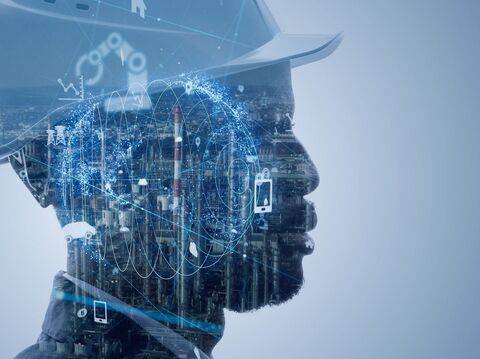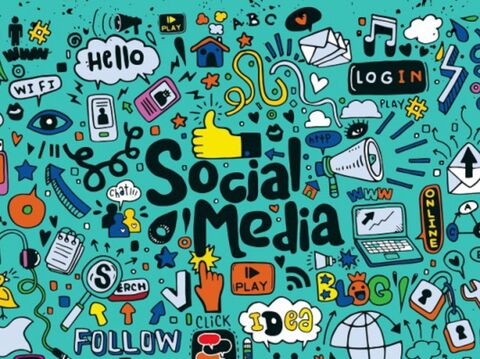Understanding CLVM in Electronics: Customer Life Cycle Strategies

Did you know the Indian consumer electronics market will be worth INR 12,898.89 billion by 2027? Evidently, the demand for electronics and the competition in the sector are high. Electronics businesses must focus on building strong customer relationships to stay ahead and maintain demand.
This is where customer lifecycle management can help your electronics business grow. Dive into this blog to understand what customer lifecycle management is. Additionally, learn strategies to enhance each stage of the cycle.
How Does a Customer Lifecycle Journey Differ from a Customer’s Journey?
People often use the terms customer life cycle and customer journey interchangeably. Although related, there is a difference between the two.
The customer’s journey encloses all touchpoints a buyer experiences. This includes their first interaction with your brand till the purchase. Customer journey offers a stepwise description of a specific buyer’s path to their buying decision.
The customer life cycle is an active process. It covers the customer's progression through each stage, from awareness to post-purchase. The customer life cycle indicates the overall experience of most customers with the brand.
It also provides a clear picture of business operations. This allows electronics businesses to make smarter decisions to improve customer experience.
A customer’s journey is viewed from the buyer’s perspective. We interpret the customer life cycle from the business’s point of view.
What is Customer Lifecycle Management?
Customer lifecycle management is the process of customising strategies for its five stages. It's about tracking every stage with specific metrics to evaluate business performance over time. These metrics may include-
-
Cost per acquisition
-
Ad impressions
-
Conversions
-
Transaction frequency
-
Engagement KPIs
Customer lifecycle management can help electronics businesses maximise their efficiency. It happens through cost-effective custom retention, customer satisfaction, and customer lifetime value.
Customer Lifetime Value (CLV) is vital for effective customer lifecycle management. It refers to the net revenue a customer contributes throughout their association period. Simply speaking, it is the sum of an individual’s total purchases in a specific period. You can calculate CLV using a simple formula:
CLV= (Customer’s Annual Revenue * Customer's average lifespan) - Customer acquisition cost.
What are the Different Stages of Customer Lifecycle?
Customer lifecycle management in the electronic industry in India has five distinct stages. You can evaluate each stage to optimise consumer experience for higher conversions.
The five stages are:
Awareness/Reach
In the first stage, the customer becomes aware of your electronic products. It can be through referrals, targeted ads, or when they search for a product that solves their problem. Here, you must analyse if your business is accessible to your customers. How easily can they find your product or locate your manufacturing unit or store?
It is essential to appear at the top when customers search for your goods online. You can do this by using:
-
Search Engine Optimisation (SEO)
-
Social Media Marketing
-
Other Digital Marketing Strategies
Acquisition
During the acquisition stage, a prospective customer becomes your lead. They contact you through phone or email or browse your website for more information. This happens because your product interests them or your website attracts their attention.
At this stage, your goal should be to create a communication channel with your leads. You can do this by providing relevant information on your website, enabling live chats, etc. Offer exclusive deals to keep them invested in your electronics business. You must also analyse if your website content can encourage your leads to buy your product.
Conversion
Conversion is a critical stage where your leads become your buying customers. To encourage more conversions, the buying process should be smooth. Your customers should be able to complete the purchase in two to three steps.
A lengthy or complex process may push them to change their decision. They may also leave the purchase incomplete.
Additionally, you must be transparent about your pricing. Specify any additional costs accompanying the product beforehand. You must also convey your warranty terms since you are dealing with electronic goods.
Retention
Your job does not end when a purchase is made. In the retention stage, you must make efforts to keep your customers satisfied. Build strong relationships with them to ensure that they stay with your brand. It can help you generate constant revenue with repeat purchases. Ensure you improve customer experience. For example, you can offer perks or discounts only applicable to your customers.
Loyalty
You can create lifetime ambassadors for your electronics brand. The key is to offer satisfactory customer experiences at all the lifecycle stages. This is the final stage of the lifecycle.
Brand loyalty and advocacy go beyond repeat purchases from customers. Positive word of mouth from existing customers is effective in growing your business. Reinforce their loyalty with referral discounts, loyalty programs, points-based discounts, and more.
How Can Electronics Businesses Benefit from Customer Lifecycle Management?
Customer lifecycle management is a cyclic process. It does not merely focus on converting a specific customer. Instead, it emphasises improving the overall customer relationship. It helps electronics businesses understand what influences consumer buying behaviour. This, in turn, allows them to make strategic decisions for improved business potential.
Here are some benefits of establishing effective CLM in the consumer electronics industry.
Offer Higher Customer Value
Understanding the lifecycle stages can boost business growth in the electronics manufacturing industry. Insights into customer buying behaviour help businesses offer higher value to them. They can improve their upselling and cross-selling efforts for higher revenue.
Enhanced Customer Satisfaction
Effective CLM can boost customer engagement and improve their experience with your business. You can do this for all the stages by understanding what drives their decisions. It helps you:
-
Increase customer satisfaction
-
Promote brand loyalty
-
Forge long-term customer relationships
Improved Efficiency in the Workflow
With a solid CLM strategy, you can streamline operations in your electronics business. CLM apps/tools allow you to centralise all customer data, accessible for all the teams, including:
-
Sales
-
Marketing
-
Operations
It enables you to identify roadblocks and pick opportunities to improve your operations. Smoother operations help reduce expenses on customer service and support. This results in improved customer retention and higher profits.
Competitive Advantage
Electronics businesses that establish effective customer lifecycle management processes receive higher business success. This is because they can create stronger customer pipelines for recurrent revenue generation.
Optimised customer experience at each stage improves business potential.
Improved Customer Acquisition
You can develop stronger customer acquisition strategies by understanding the customer life cycle. You can analyse the complete customer experience to analyse what works. You can also change your marketing efforts for more acquisitions.
How Can You Drive Effective Customer Lifecycle Management?
Here are the best strategies to enhance your customer life cycle.
Specify Your Target Audience (Awareness Stage)
Create buyer personas to identify your ideal prospects. You can then form strategies to reach your audience with targeted campaigns. Assess campaign effectiveness with metrics like click-through rates, ad impressions, etc.
Publish Relevant Content (Awareness Stage)
Command customers’ attention and trust with engaging SEO content. Significant content that ranks on search engines will help you stay on your customer’s radar.
Offer Self-Service Resources (Acquisition Stage)
Provide relevant information to your prospects to help them through the acquisition process. Guide them about your products with resources like:
-
FAQs
-
Comprehensive knowledge bases
-
Informative blogs
Establish Prompt Customer Service Strategies (Acquisition Stage)
Customers need support even before they buy your product. Lack of service and inability to answer their queries can push them away. Hence, proactive customer support is necessary, along with self-service resources.
Create a Seamless Buying Process (Conversion Stage)
Streamline your ordering system and make the purchase process simpler for the customers. Offer several payment options.
Provide Support to Encourage Purchase Decisions (Conversion Stage)
Offer support through live chat, phone, or email when customers are in the buying process. It signifies your concern about their experience. It also assures them of your constant support even after they have bought your product.
Personalise Post-Purchase Customer Experience (Retention Stage)
Ensure customers remember your brand and come back for your products by:
-
Sending thank you emails and customised recommendations
-
Offering exclusive coupons and discounts
-
Providing early access to new products or upcoming sales
Request for Feedback and Encourage Customer Referrals (Loyalty Stage)
Encourage customers to share their experiences with your brand. They can post their feedback on social platforms or your website. Offer special discounts on repeat purchases and referrals.
Wrapping Up
Customer lifecycle management is crucial to running a successful electronics business in India. The tips mentioned above can help companies to manage the cycle effectively.
Yet, to build a strong strategy, relying on a trusted partner like Growth Jockey can help. Connect with the team today to win at CLM for business growth!
FAQs
1. Why do electronics businesses need a customer lifecycle management strategy?
A CLM strategy allows electronics businesses to evaluate their overall customer experience. It will enable them to make improvements in their processes wherever necessary. This improves ROI, brand awareness, and customer loyalty.
2. What is a Customer Lifecycle Management system?
A CLM system helps you track the stages of your customer’s experience with your brand. It also allows you to assign metrics for each stage and monitor them to evaluate success.
3. Which is the most important stage of a customer’s lifecycle?
Each stage of the lifecycle is equally important. Mismanagement at any stage can impact purchase decisions. It can also affect your relationship with the customers.








